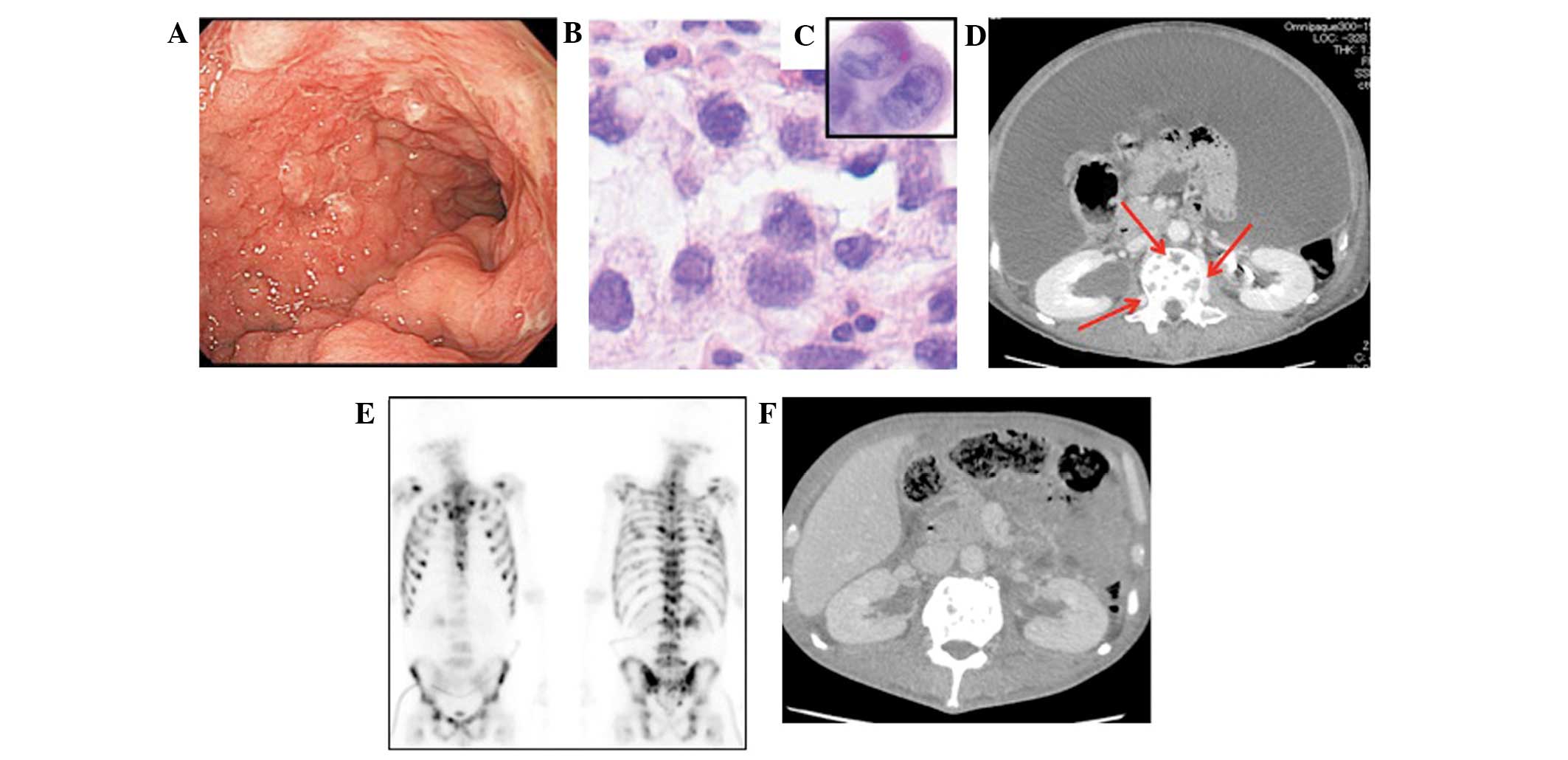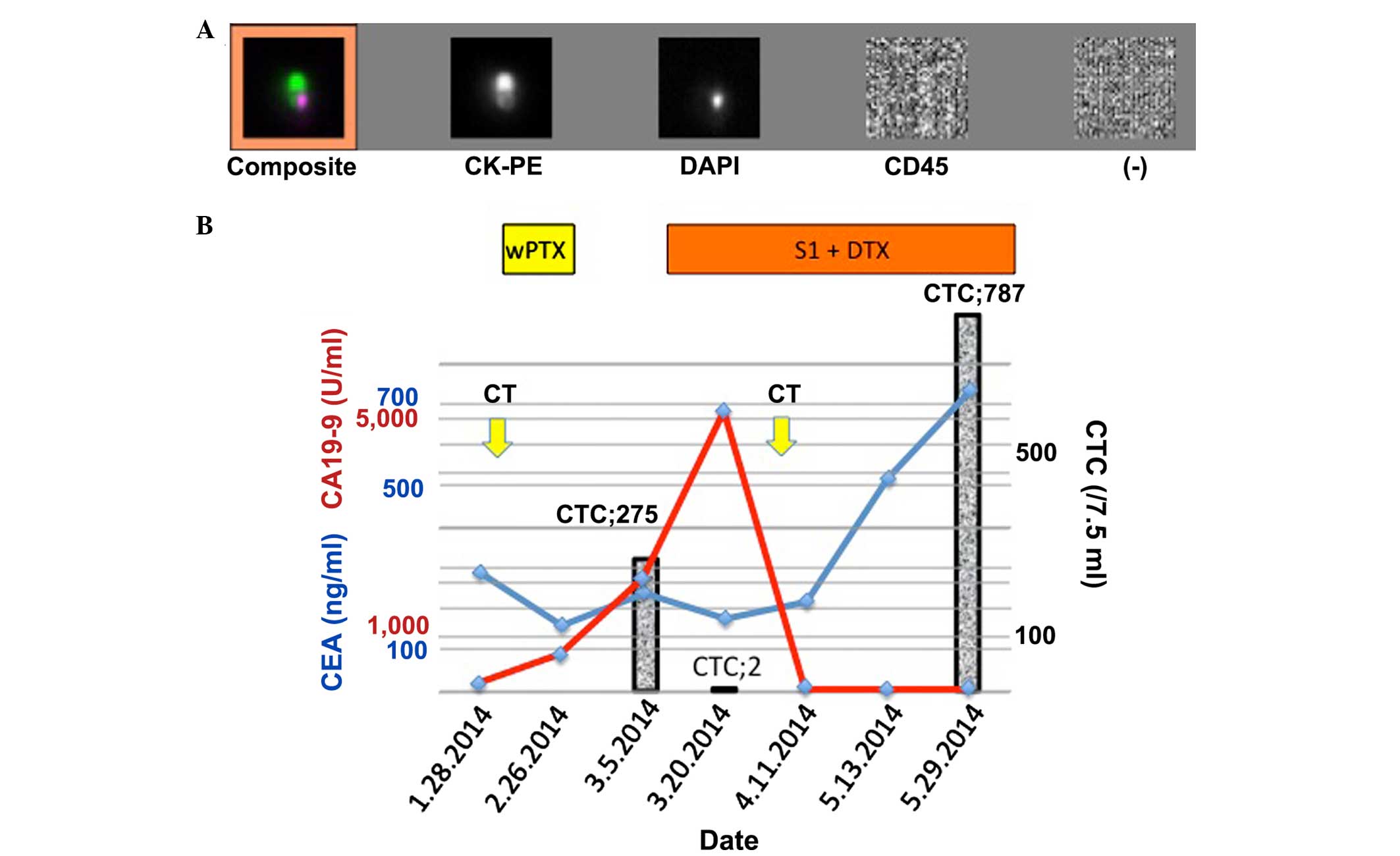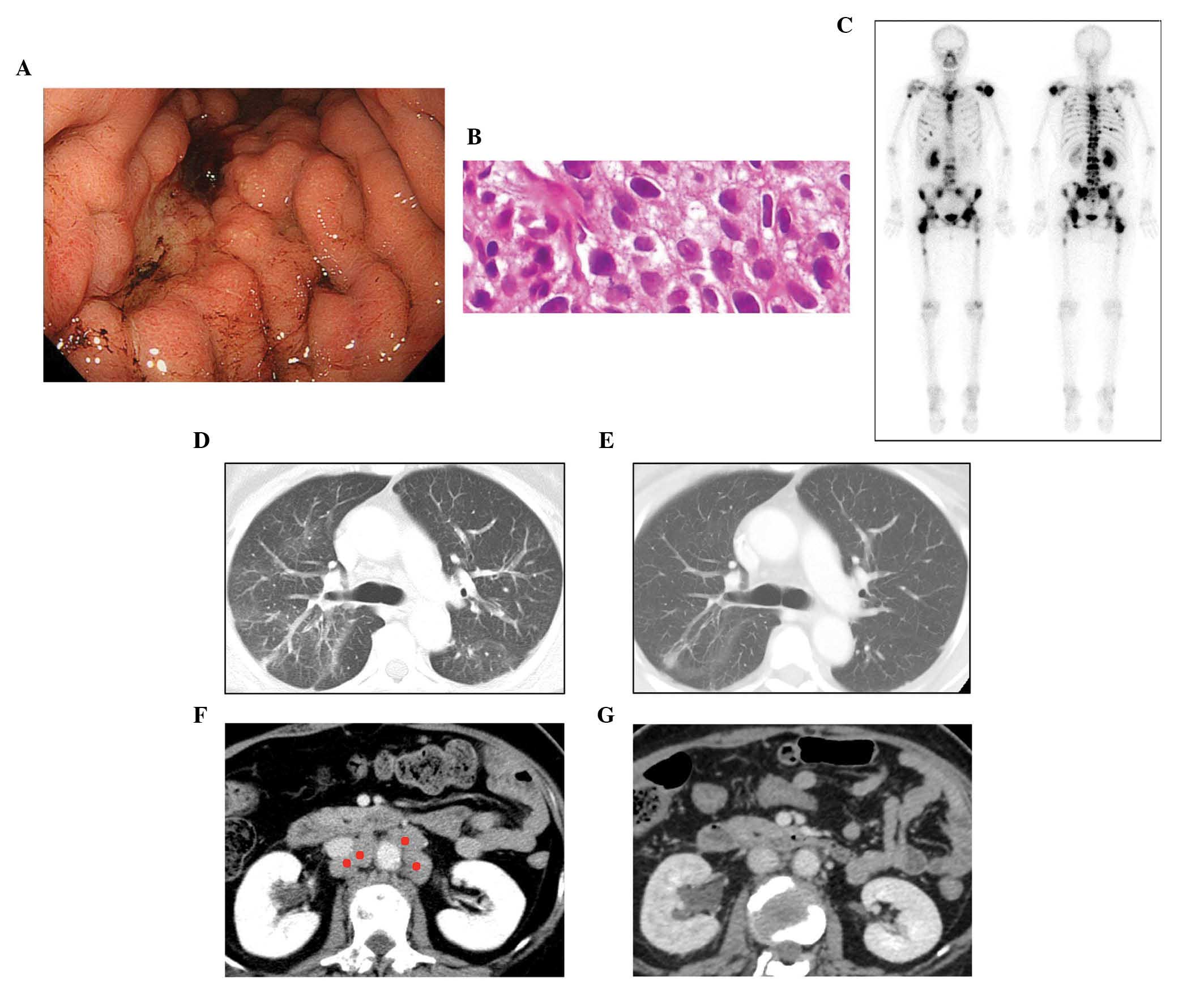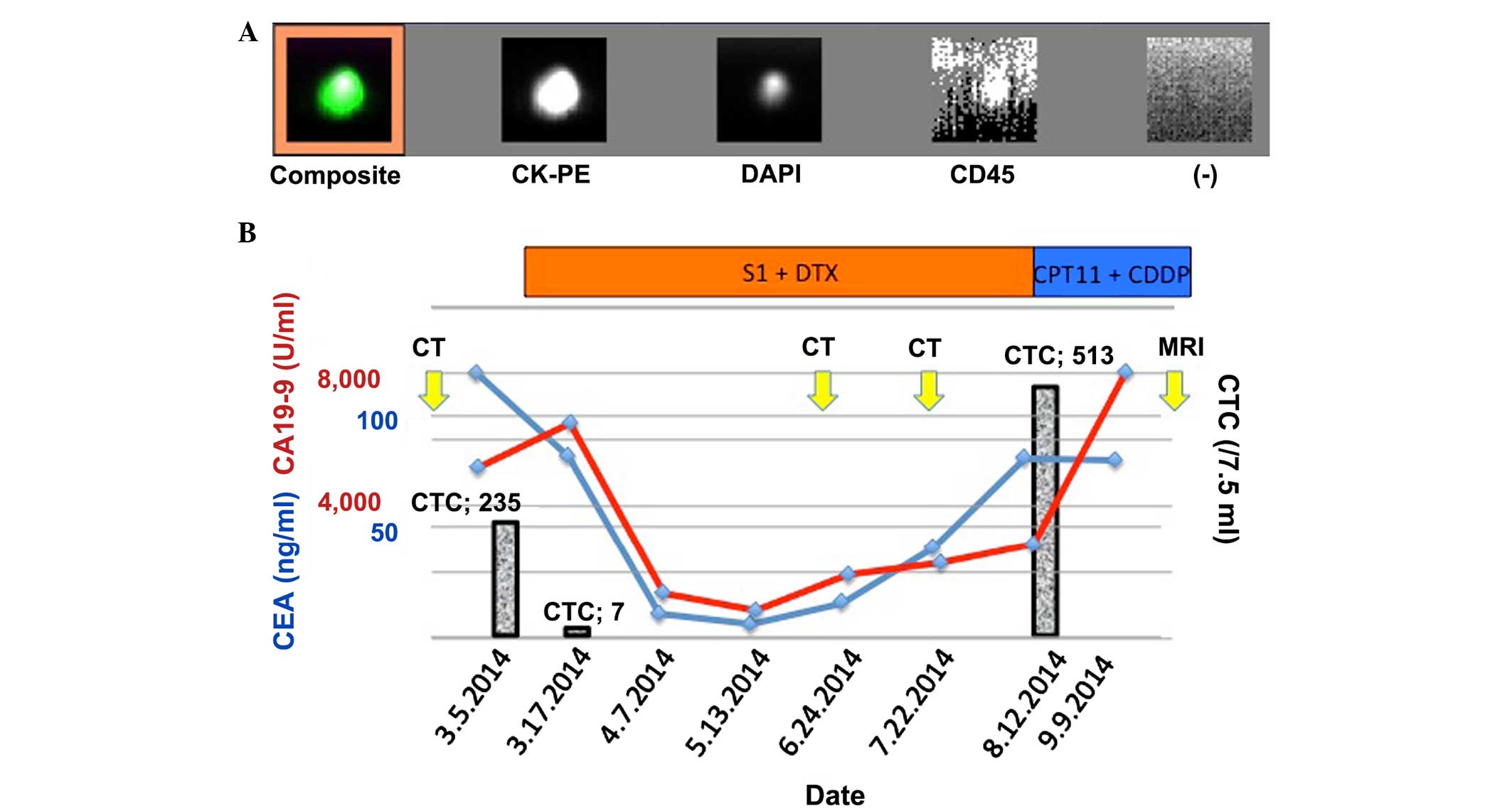|
1
|
Yoshikawa K and Kitaoka H: Bone metastasis
of gastric cancer. Jpn J Surg. 13:173–176. 1983. View Article : Google Scholar : PubMed/NCBI
|
|
2
|
Silvestris N, Pantano F, Ibrahim T,
Gamucci T, De Vita F, Di Palma T, Pedrazzoli P, Barni S, Bernardo
A, Febbraro A, et al: Natural history of malignant bone disease in
gastric cancer: Final results of a multicenter bone metastasis
survey. PLoS One. 8:e744022013. View Article : Google Scholar : PubMed/NCBI
|
|
3
|
Rhee J, Han SW, Oh DY, Im SA, Kim TY and
Bang YJ: Clinicopathologic features and clinical outcomes of
gastric cancer that initially presents with disseminated
intravascular coagulation: A retrospective study. J Gastroenterol
Hepatol. 25:1537–1542. 2010. View Article : Google Scholar : PubMed/NCBI
|
|
4
|
Takashima A, Shirao K, Hirashima Y,
Takahari D, Okita NT, Nakajima TE, Kato K, Hamaguchi T, Yamada Y
and Shimada Y: Sequential chemotherapy with methotrexate and
5-fluorouracil for chemotherapy-naive advanced gastric cancer with
disseminated intravascular coagulation at initial diagnosis. J
Cancer Res Clin Oncol. 136:243–248. 2010. View Article : Google Scholar : PubMed/NCBI
|
|
5
|
Etoh T, Baba H, Taketomi A, Nakashima H,
Kohnoe S, Seo Y, Fukuda T and Tomoda H: Diffuse bone metastasis
with hematologic disorders from gastric cancer: Clinicopathological
features and prognosis. Oncol Rep. 6:601–605. 1999.PubMed/NCBI
|
|
6
|
Etoh T, Baba H, Taketomi A, Nakashima H,
Kohnoe S, Seo Y, Saito T and Tomoda H: Sequential methothrextate
and 5-fuororacil therapy for diffuse bone metastasis from gastric
cancer. Anticancer Res. 18:2085–2088. 1998.PubMed/NCBI
|
|
7
|
Kang BW, Kim JG, Kwon OK, Chung HY and Yu
W: Non-platinum-based chemotherapy for treatment of advanced
gastric cancer: 5-fluorouracil, taxanes, and irinotecan. World J
Gastroenterol. 20:5396–5402. 2014. View Article : Google Scholar : PubMed/NCBI
|
|
8
|
Boku N, Yamamoto S, Fukuda H, Shirao K,
Doi T, Sawaki A, Koizumi W, Saito H, Yamaguchi K, Takiuchi H, et
al: Gastrointestinal Oncology Study Group of the Japan Clinical
Oncology Group: Fluorouracil versus combination of irinotecan plus
cisplatin versus S-1 in metastatic gastric cancer: A randomised
phase 3 study. Lancet Oncol. 10:1063–1069. 2009. View Article : Google Scholar : PubMed/NCBI
|
|
9
|
Cao C, Zhang X, Kuang M, Gu D, He M, Chen
J and Tang C: Survival benefit from S-1 as compared to Fluorouracil
in Asian patients with advanced gastrointestinal cancer: A
meta-analysis. Cancer Sci. 105:1008–1014. 2014. View Article : Google Scholar : PubMed/NCBI
|
|
10
|
Bang YJ, Van Cutsem E, Feyereislova A,
Chung HC, Shen L, Sawaki A, Lordick F, Ohtsu A, Omuro Y, Satoh T,
et al: ToGA Trial Investigators: Trastuzumab in combination with
chemotherapy versus chemotherapy alone for treatment of
HER2-positive advanced gastric or gastro-oesophageal junction
cancer (ToGA): A phase 3, open-label, randomised controlled trial.
Lancet. 376:687–697. 2010. View Article : Google Scholar : PubMed/NCBI
|
|
11
|
Hiraiwa K, Takeuchi H, Hasegawa H, Saikawa
Y, Suda K, Ando T, Kumagai K, Irino T, Yoshikawa T, Matsuda S, et
al: Clinical significance of circulating tumor cells in blood from
patients with gastrointestinal cancers. Ann Surg Oncol.
15:3092–3100. 2008. View Article : Google Scholar : PubMed/NCBI
|
|
12
|
Otsuka K, Imai H, Soeda H, Komine K,
Ishioka C and Shibata H: Practical utility of circulating tumour
cells as biomarkers in cancer chemotherapy for advanced colorectal
cancer. Anticancer Res. 33:625–629. 2013.PubMed/NCBI
|
|
13
|
Komine K, Inoue M, Otsuka K, Fukuda K,
Nanjo H and Shibata H: Utility of measuring circulating tumor cell
counts to assess the efficacy of treatment for carcinomas of
unknown primary origin. Anticancer Res. 34:3165–3168.
2014.PubMed/NCBI
|
|
14
|
Eisenhauer EA, Therasse P, Bogaerts J,
Schwartz LH, Sargent D, Ford R, Dancey J, Arbuck S, Gwyther S,
Mooney M, et al: New response evaluation criteria in solid tumours:
Revised RECIST guideline (version 1.1). Eur J Cancer. 45:228–247.
2009. View Article : Google Scholar : PubMed/NCBI
|
|
15
|
Cristofanilli M, Budd GT, Ellis MJ,
Stopeck A, Matera J, Miller MC, Reuben JM, Doyle GV, Allard WJ,
Terstappen LW and Hayes DF: Circulating tumor cells, disease
progression, and survival in metastatic breast cancer. N Engl J
Med. 351:781–971. 2004. View Article : Google Scholar : PubMed/NCBI
|
|
16
|
Moreno JG, O'Hara SM, Gross S, Doyle G,
Fritsche H, Gomella LG and Terstappen LW: Changes in circulating
carcinoma cells in patients with metastatic prostate cancer
correlate with disease status. Urology. 58:386–392. 2001.
View Article : Google Scholar : PubMed/NCBI
|
|
17
|
Koga T, Tokunaga E, Sumiyoshi Y, Oki E,
Oda S, Takahashi I, Kakeji Y, Baba H and Maehara Y: Detection of
circulating gastric cancer cells in peripheral blood using real
time quantitative RT-PCR. Hepatogastroenterology. 55:1131–1135.
2008.PubMed/NCBI
|
|
18
|
Toyoshima K, Hayashi A, Kashiwagi M,
Hayashi N, Iwatsuki M, Ishimoto T, Baba Y, Baba H and Ohta Y:
Analysis of circulating tumor cells derived from advanced gastric
cancer. Int J Cancer. 137:991–998. 2015. View Article : Google Scholar : PubMed/NCBI
|
|
19
|
Pantel K and Alix-Panabières C: Bone
marrow as a reservoir for disseminated tumor cells: A special
source for liquid biopsy in cancer patients. Bonekey Rep.
3:5842014. View Article : Google Scholar : PubMed/NCBI
|













